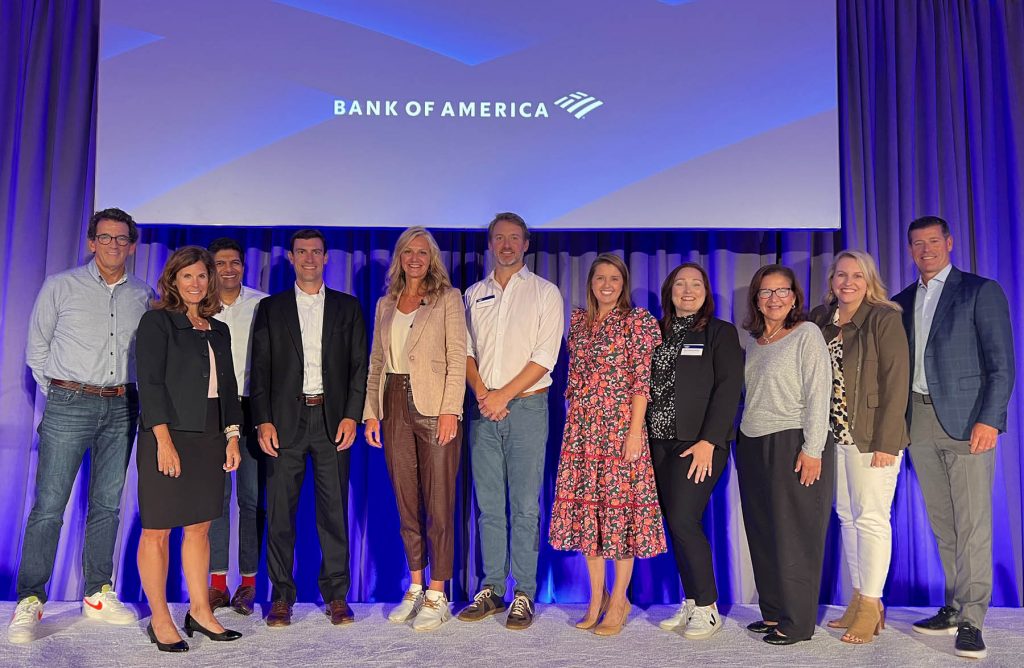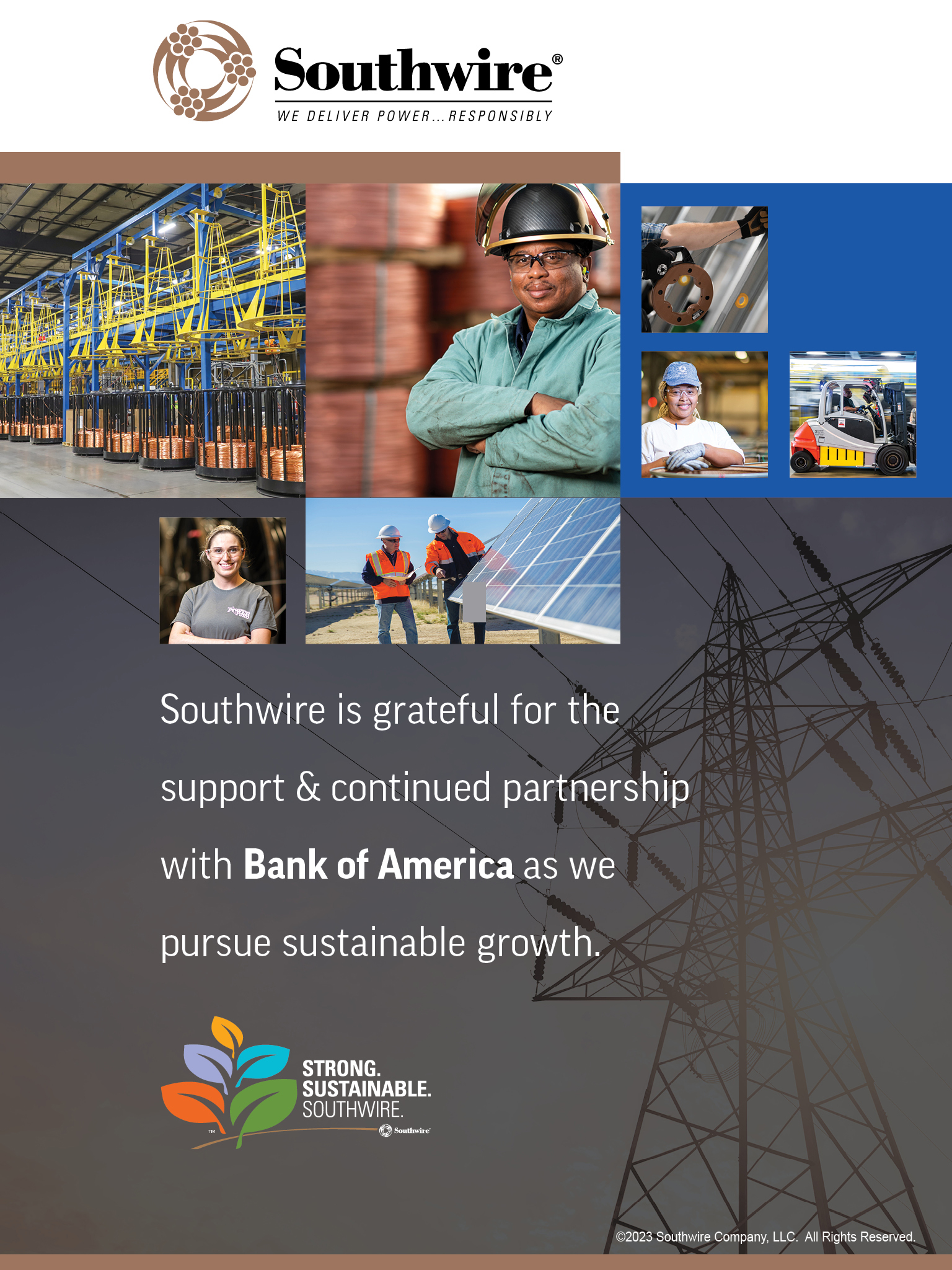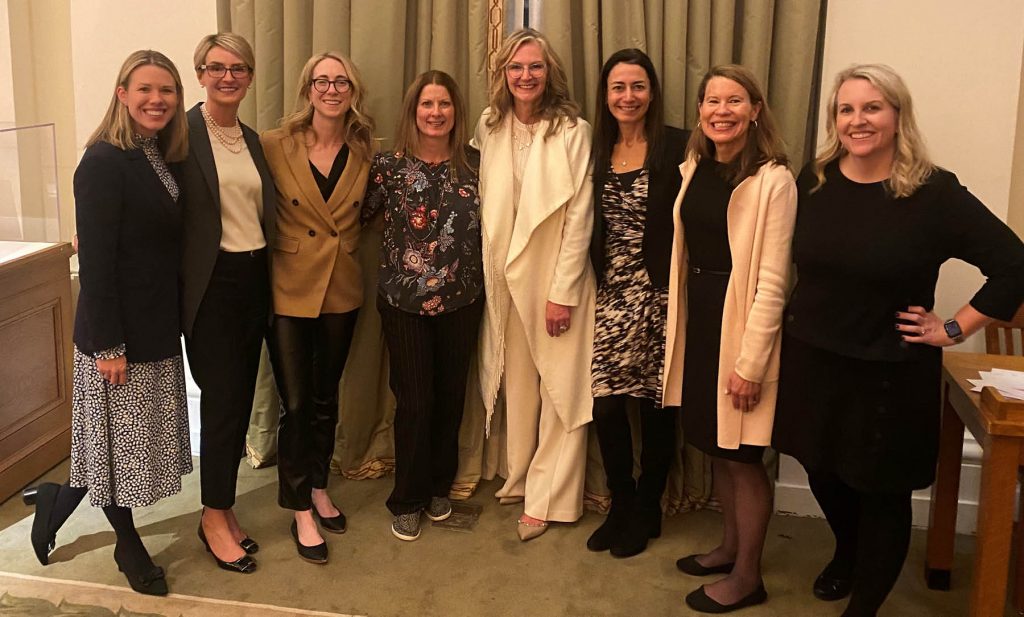Language
You can read the magazine in one of the following languages
Geolocation
You can read the global content or the content from your region

Wendy Stewart pursues a forward-looking approach in her work as President of Global Commercial Banking at Bank of America. It’s a role that requires broaching important but potentially touchy topics with clients, whose interests the bank strives to protect amid tumult and uncertainty.
Preparing clients for a net zero economy on carbon emissions frequently tops the list of forward-looking topics for Stewart and her team, who serve middle-market companies in the United States with revenues of US$50 million to US$2 billion across all major industries, the not-for-profit sector and educational institutions, according to the bank.
The team tells its customers in factual, dispassionate and non-political presentations that net zero is something that is happening, and they need to prepare.
“We need to be able to have effective conversations with clients,” Stewart tells The CEO Magazine. “We want to stick to the facts, and we know that this has an opportunity to really impact clients, either positively, or it can impact them negatively if they’re not prepared for what’s coming.”

“This is a relationship-based business and it’s very personal for me. We are most effective when we have strong relationships with our clients and strong relationships with each other.”
Such customer conversations are an example of the forward-looking approach employed by the Global Commercial Banking team, which uses data and analysis to help clients spot growth opportunities and prepare for what is going to happen versus focusing on what already has happened, Stewart says.
It also highlights the emphasis Stewart puts on building close relationships with customers. “When you think about how we develop client opportunities, it is through relationships,” she says.
Global Commercial Banking forms one of the eight divisions at Bank of America, the second-biggest bank in the United States with assets of more than US$3 trillion. Its global corporate banking provides clients with “treasury, lending, leasing, investment banking, risk management and international subsidiary banking services”.
In addition to offering forward-looking solutions, Stewart speaks of ‘Responsible Growth’ – an ethos guiding each of the bank’s divisions. The ethos guides executives and employees as they pursue the objectives of delivering returns to shareholders, serving customers and addressing society’s most pressing challenges.
Stewart lists the four key tenets of Responsible Growth: “We’ve got to grow, no excuses. We’ve got to grow within our customer framework. We’ve got to grow within our risk framework. And we’ve got to grow in a way that’s sustainable.”
Stewart, who first joined Bank of America in 1996, was promoted to President of Global Commercial Banking in 2021. She started at a tumultuous time as the pandemic was still causing upheaval and economic uncertainty was pervasive.
She thought long and hard about the change and how it could occur in the context of Responsible Growth.
“How do we think about the Responsible Growth framework also knowing that the needs of our clients and the needs of our team, frankly, are changing? The industry’s changing. The world we live in is changing,” Stewart recalls of her thinking at the time.

“There’s just a lot that is changing, whether it’s internal, external; some of it we can control, some of it we can’t control. I thought a lot about that.”
Along with the changes buffeting the banking business and wider economy, she thought about relationships. “This is a relationship-based business and it’s very personal for me. We are most effective when we have strong relationships with our clients and strong relationships with each other.”
When the pandemic reduced in-person contact with clients and staff, Stewart put an emphasis on getting to know her team, leveraging Zoom and WebEx prodigiously. She also started writing a newsletter aptly titled ‘Wendy’s Weekly’, which analytics show is being opened by 85 percent of workers.
“I write it myself every week. And I don’t cover a lot of what’s going on in the market,” she says. “I decided to use this as a way to just engage with the team in a more personal way and to talk about just what I experienced that week, what I’m doing, what I’ve learned, and then just to share whatever was on my mind.”
Stewart endeavored to build on global commercial banking’s solid foundations, with the bank’s presence in 113 cities around the United States and more bankers on the ground than any other financial institution.
“We’re going to continue to invest in our team to make sure that they can deliver the best advice and insights, and make it easier for clients to transact,” she says.

“When we start to have those fact-based conversations, they suddenly are very engaged in the topic.”
Another objective is looking closely at newer economy businesses such as the green economy, technology and health care – part of the bank’s objective to being forward-looking.
“There are so many new industries that are emerging, and so we have a team that’s dedicated to covering those opportunities,” Stewart says. “It’s important that we have a team that understands those industries, how they’re changing and growing, how we lend to those type of companies.”
Net zero ranks among the opportunities for clients, along with being a challenge they must prepare for. It’s an example of how the global commercial banking teams approaches its relationships with clients.
“We have to think about what the implications for these companies are as we’re doing business with them, but also what the implications for companies are as they’re doing business with their client base,” Stewart says.
“We’re sticking to the facts and saying, ‘Well, when we think about the fact that you are in a supply chain of a Fortune 500 company that has made a net zero commitment, that means at some point, they’re going to ask you about your net zero plans because they’re going to have to account for that’.”
“When we start to have those fact-based conversations, they’re suddenly very engaged in the topic.”
Net zero is but one of the global challenges Bank of America is preparing its clients for. “As the world is changing, geopolitical considerations are forcing our clients to think differently about where they’re operating around the world,” she says.
“We’ve got more opportunities to continue to work with those companies as that shifts and as they’re looking to grow maybe in other countries or regions where they haven’t done business.”
The focus on net zero fits the fourth tenant of Responsible Growth: sustainability. That tenant includes the formation of strong long-term partnerships with clients, according to Stewart.
“It’s also about being a terrific place to work, and it’s about supporting our communities. We think about that as profits and purpose, and that you can do both,” she says.

“To be in an environment that is so supportive of working women has made a huge difference for me.”
She calls the company’s inclusive culture a ‘differentiator’, which Bank of America cultivates, along with its investments in communities. Stewart points to her own personal history – she left the bank in 2000 but returned in 2007 after having two children at the invite of an executive who, she says, took a chance on her.
“To be in an environment that is so supportive of working women has made a huge difference for me,” she says. “We have made sure that we are investing in our team, we are investing in our communities, and that is something that we will continue. We absolutely want to be a place where our teammates are supported, where we’re diverse in the talent that works for us and where we’re an inclusive environment.”